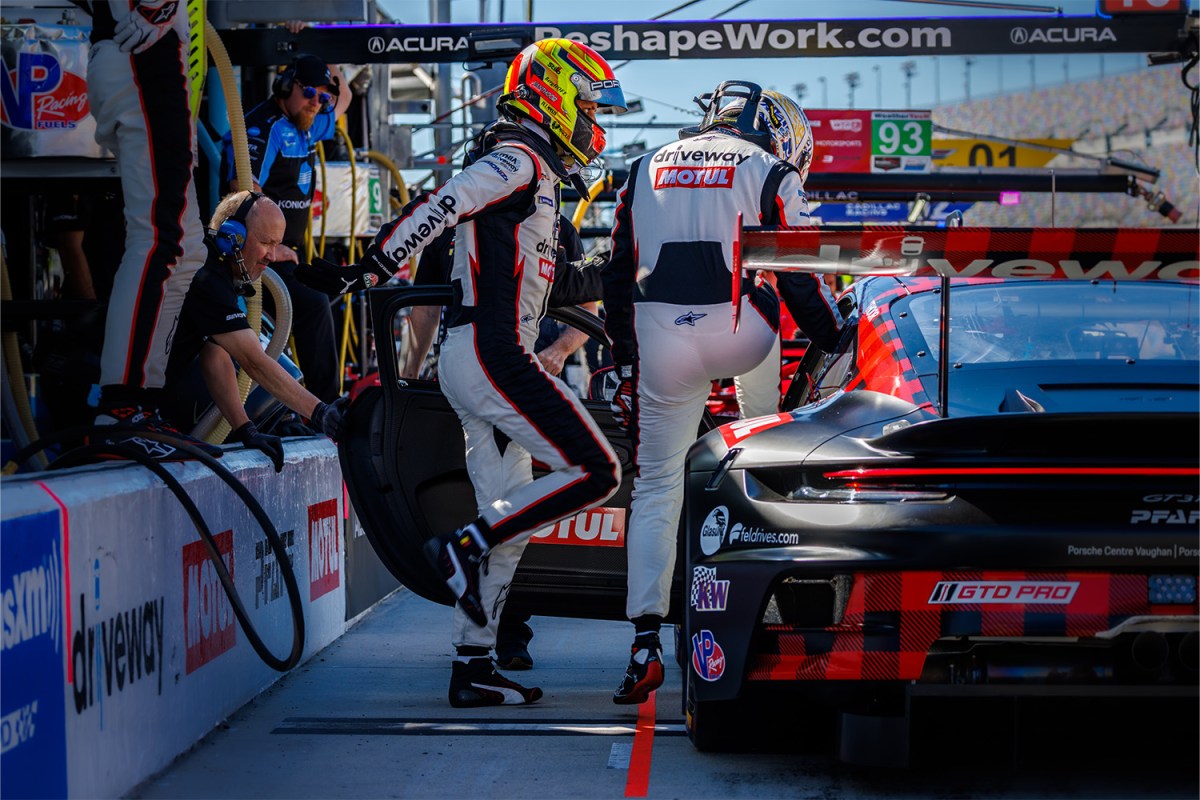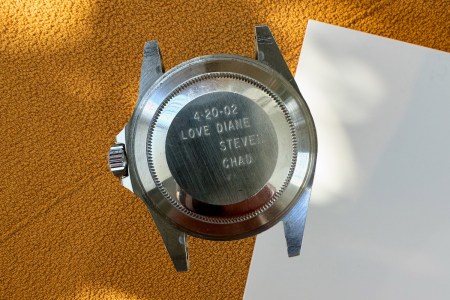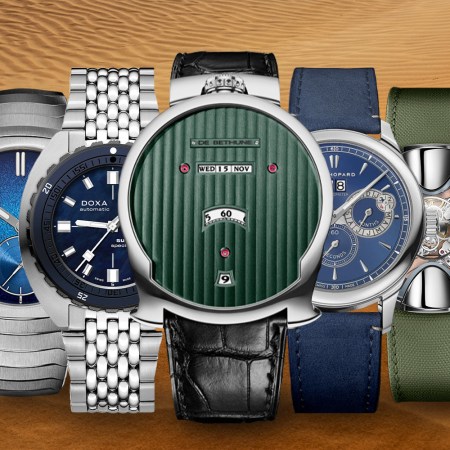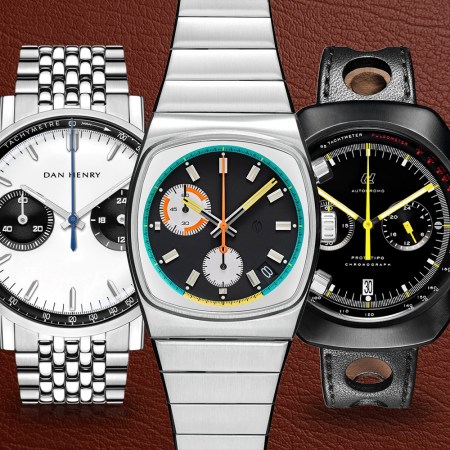One evening about five years ago, I attended a cocktail reception in Manhattan at the offices of a vintage watch dealer, Analog:Shift. The occasion was the release of a new book about vintage watch collecting, and there were plenty of interesting timepieces in attendance — not to mention quite a few interesting people. One of these folks was sporting a Rolex Cosmograph Daytona, as many “watch guys” and “watch gals” are wont to do.
But this was no ordinary Daytona. At someone’s prompting, the gent removed the watch, flipped it over, and showed me the caseback: Laser-inscribed within a shield was the Rolex 24 at Daytona logo, and beneath that, one simple word: “Winner.” This guy was a champion driver of one of the most grueling endurance races in the world.
It should say something about my interest in motorsports that I can’t remember that dude’s name for the life of me.
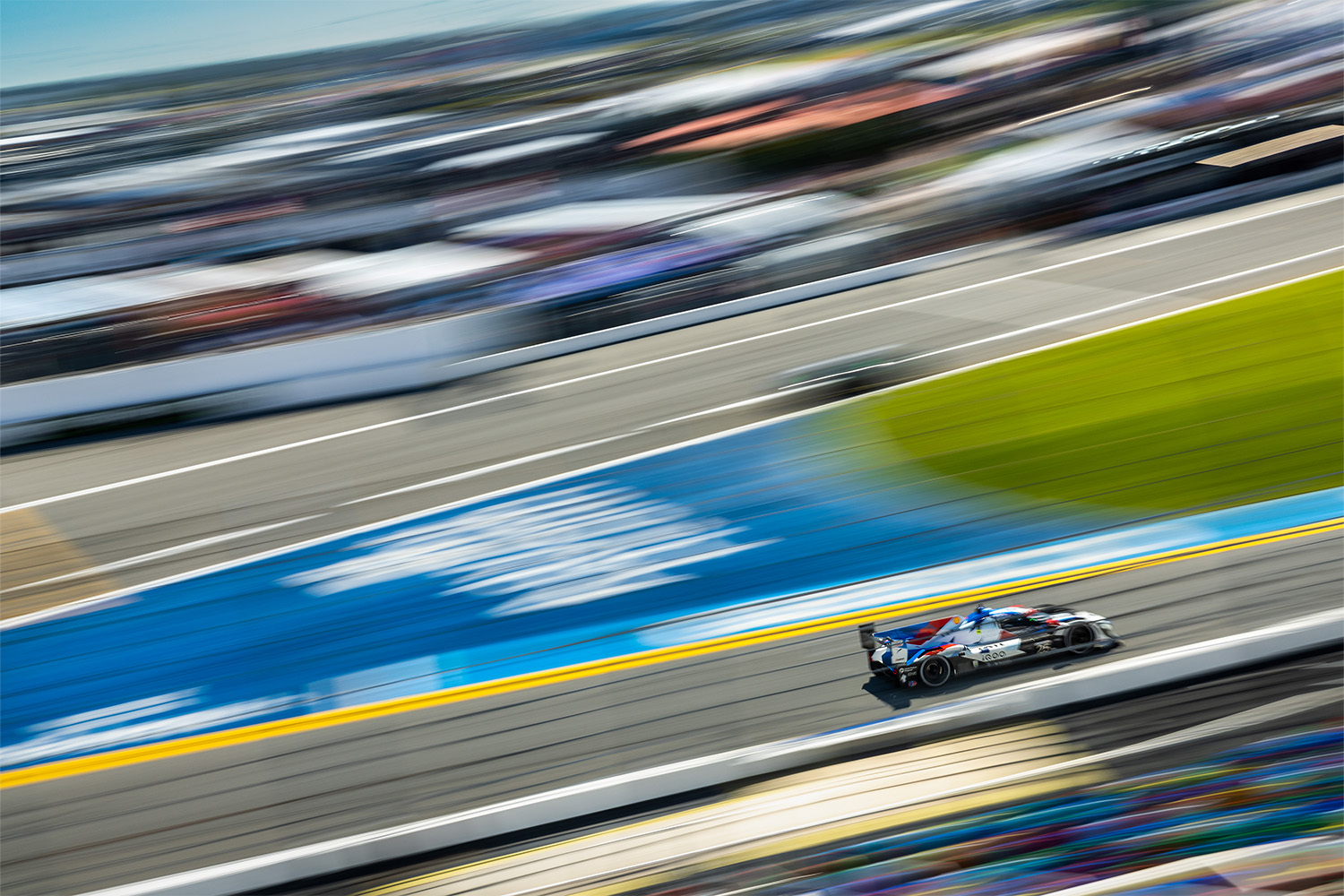
A Plane Ole’ Dude Among Car Guys
Don’t get me wrong: I appreciate a great car. Especially if it’s a 911. But I am most certainly not a car guy. (I was an airplane kid — my old man would take me to air shows in the ‘90s/early ‘00s and we would watch F-16s rip overhead at 1,300 mph. That impressed me.) But I’ll tell you what I do love: Rolex watches. Why? They work. They’re built like tanks. They look great. They stand the test of time. Etc. (I took one in to check its gaskets after 20 years of ownership — I had never had it serviced. After five minutes the technician returned it to me: Passed with flying colors. I took it diving the following week.)
When I received a kind invitation from the folks at Rolex to travel down with them to Daytona to witness America’s most grueling endurance race, I had some inkling of what I was getting into: Every journalist, car guy, and enthusiast I had spoken to told me that this was one of the coolest sporting events in the world, full stop. That’s a healthy amount of hype to live up to — could Rolex do it?
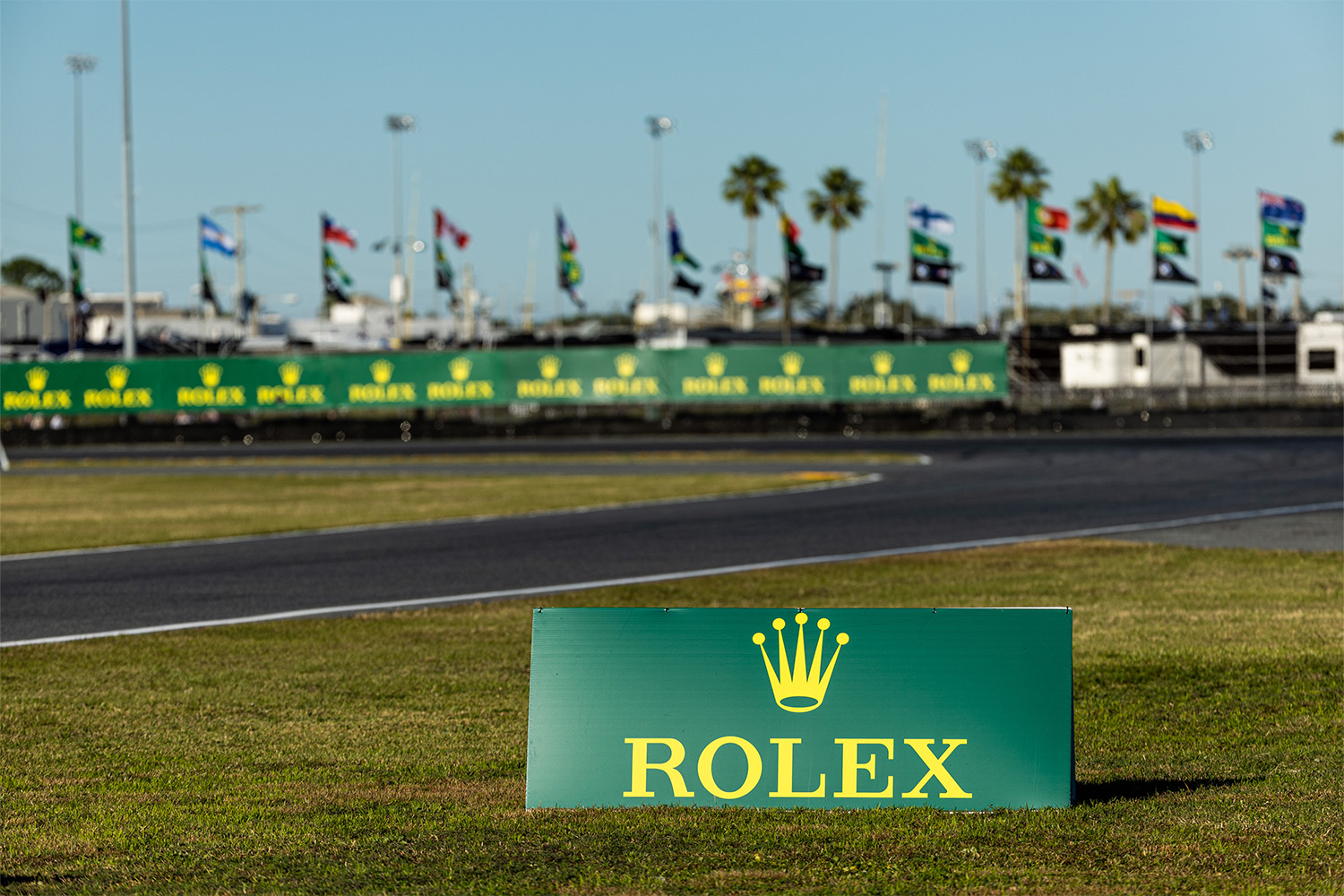
Before the Race
The track itself is intimidating. Situated at the Daytona International Speedway in Daytona Beach, Florida, it consists of a 3.56-mile (5.73km) length of asphalt. Above it are stands able to accommodate 101,500 screaming fans, at least a handful of whom affectionately sport “I Love Jesus” hats. People are named “Chip,” “Bubba,” “Jed,” and things like that. It ‘ain’t like New Jersey.
The first thing the Rolex crew did was bring me — and several automotive journalists, who truly know their automotive shit — down to the track for a round of “hot laps.” Gazing at a pack of cars spanning Ferraris, Lamborghinis, Porsches, BMWs, and more, I picked out what looked to my novice eyes like a souped up M6 with a female driver roughly my age who was, at that moment, getting into the driver’s seat. I felt like Indiana Jones choosing a Grail from a dusty Crusader in some back room at Petra: Choose wisely, for as the real Driver has the power to burn around the track at 200 mph, the false one has the power to smear your sorry ass up against the grandstand and send you home in a paper bag.
I have no qualms about admitting that I am, in point of fact, a shit driver — I simply have no instinct for it. This gal, on the other hand, was a pro: Once the tires warmed up a bit, she ripped around the Speedway like Luke piloting an X-Wing, hugging corners, gunning down straightaways and bringing us nearly horizontal at 140 mph on a curve that precedes the famous “Bus Stop” section of the track. I recorded the entire run on my iPhone so that I could relive the high later.
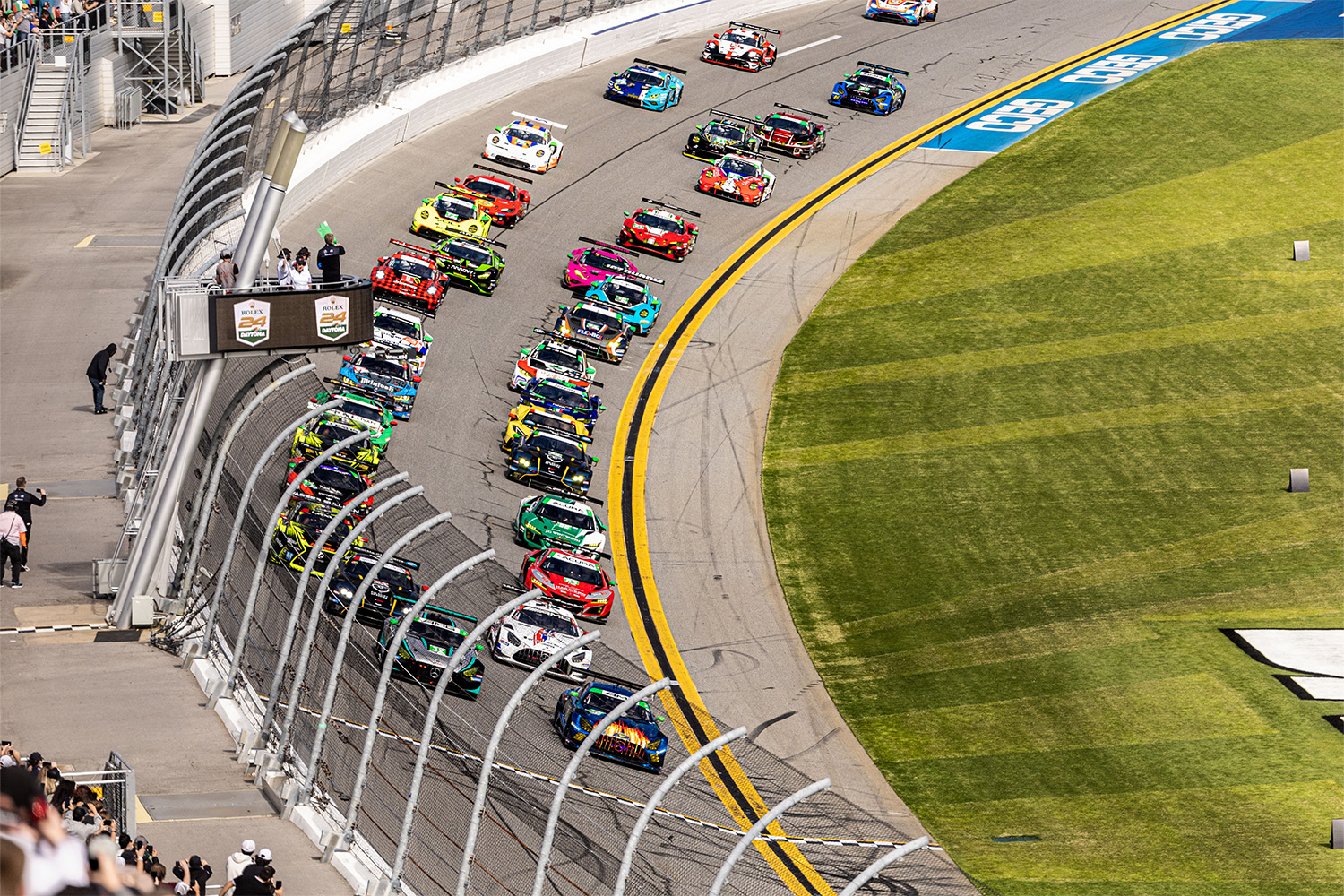
A Living Legend
Being able to do this for three hours at a time — which is about how long a driver is expected to sit in his seat and maintain a constant speed of really fucking fast before switching, in the pit lane, with a fellow team driver in roughly 15 seconds — is a skill that only those with the utmost testicular fortitude can master. (Needless to say, this gal had balls in spades — I would’ve put that Bimmer into the car ahead of me in about 10 seconds.)
These days, these cars are kitted out with so many electronics — monitors, automatic safety systems, advanced comms, a drinking tube, etc. — that they’re hardly recognizable to the “old school” crew of drivers. Hurley Haywood, a certified legend of an American driver who, at five victories, ties Scott Pruett for most overall Daytona wins, remarked that the steering wheel alone on these vehicles has some 30 different buttons. “The mental part is almost as important as the physical part,” he said, concerning the concentration needed by the drivers. “You have to balance the two, because if one gets out of whack, you’re in trouble.”
When I ask him if thinks it’s safer or less safe to have so much input — from the engineers in the pit, from the vehicle itself — than to simply be able to concentrate on driving the car, Haywood admits a cruel truth: “I don’t think I’d be able to drive one of these modern cars. It would be overwhelming,” he says. “I had a standing order when I was in the car: ‘Do not talk to me unless I’m on fire, or unless something really bad has happened.’ It breaks your concentration, and that’s the window where mistakes can happen.”
But, he concedes, the drivers today are well trained, they work constantly on simulators, and they rehearse every single possible scenario that could occur on the track the way a SEAL team rehearses before a raid.
Why You Should Engrave Your Watches
Personalizing your watch transforms it from a mere composite of gears and springs and steel into something much more meaningfulHaywood went on to say that today, the best drivers are — no surprise — those who have mastered the hand-eye coordination necessary to play video games. He admitted that he wasn’t so sure he’d be competitive today the same way he was at Daytona in 1973, 1975, 1977, 1979, and 1991 — or at Le Mans in 1977, 1983, and 1994, or at Sebring in 1973 or 1981. (Goddamn legend, this guy.)
“I started racing in 1973 — that was my first win. We slept in the back of the transporter,” he continued. “Now you walk out there and you see these motorhomes: They have chefs that cater to each driver and what he likes to eat, they have Medical where they monitor drivers’ fluids and they can get an IV. They have guys come in and work with the drivers if someone is having a mental breakdown. It is high-tech, and we didn’t have any of that stuff.”
We were having this conversation in one of the pits, which — speaking of Navy SEALs — looks like the command center where Admiral McRaven oversaw DEVGRU take out high-value targets in some of the more dangerous corners of the world: Each consisted of two levels of computer screens, readouts, comms, seats, and sweaty, tired men and women wearing jumpsuits and headsets, sipping coffee or Mountain Dew and training their bleary eyes on the readouts in front of them. Live video piped in from dashboard cameras, and while the first-story people monitored analytics, the second-story people crafted strategy. When their vehicle comes tearing ass down the pit lane, the technicians are so well rehearsed that they can fix a problem, refuel a car, or change out a driver in a matter of seconds.
(Imagine if this level of efficiency and sophistication was applied to the American health care system. What a day that would be.)
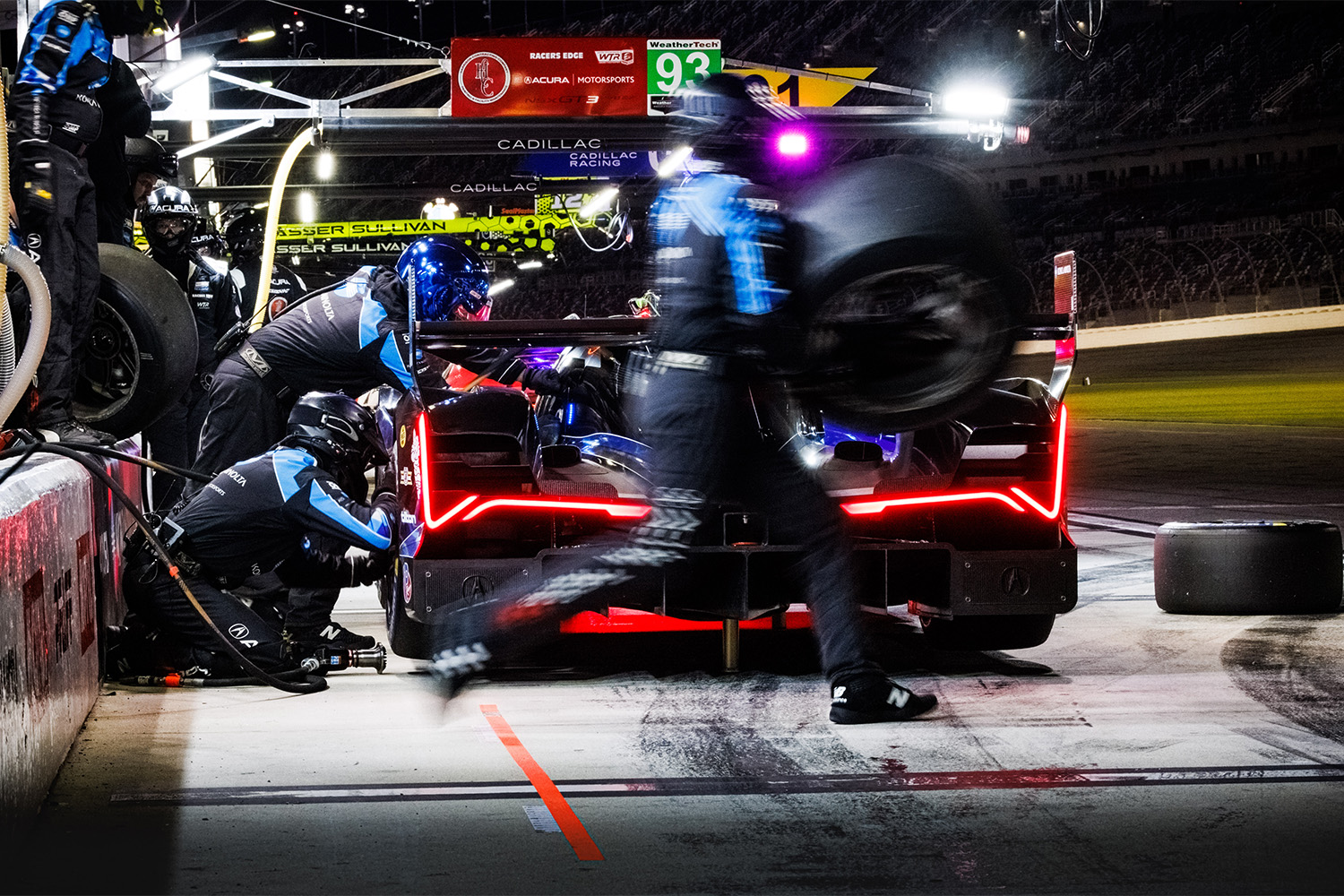
The Rolex Connection
So where exactly does Rolex come in? The Superlative Swiss have been involved in this motorsport venture since roughly the dawn of automotive time — or, more precisely, since the 1930s. Back then, Sir Malcolm Campbell set several land speed records in various cars — all named Bluebird — while wearing a Rolex chronometer on his wrist. Notably, he set some of these at Daytona Beach, and subsequently offered a testimonial that was quickly capitalized upon by the geniuses in the Crown’s marketing dept: “Dear Sirs, I have been now using my Rolex watch for some little while, and it is keeping perfect time under somewhat strenuous conditions…I would like to congratulate you having produced a very first-class watch, suitable for really rough treatment.” (Understatement of the century; exceedingly British; no notes.)
Rolex began its official association with what would become the Daytona International Speedway in 1959, and launched what would become perhaps the most desirable watch in the world in 1963: the Oyster Perpetual Cosmograph. (The word “Daytona” wasn’t added until a year or so later.) In 1968, the brand began its relationship with three-time Formula 1 champion Sir Jackie Stewart, and in 1992, it became the Title Sponsor of the Rolex 24 at Daytona. (It’s also the Official Timepiece of the 24 Hours of Le Mans since 2001, and nine-time winner Tom Kristensen is a Rolex Testimonee.) It’s also also a long-term Global Partner and Official Timepiece of Formula 1; the Official Timepiece of Pebble Beach Concours d’Elegance; and a partner at Goodwood Revival. (TL; DR: Rolex likes vroom vroom vroom!)
Sir Jackie Stewart perhaps put it best: “The Swiss watch brand aligns itself with excellence in every endeavor it supports and Rolex continues to lead the world in that respect.” No surprise there — the winningest watch company in the world loves a winner. But the 2023 season is no ordinary racing season: While last year was the 10th anniversary of the brand’s status as Global Partner and Official Timepiece of Formula 1, this year marks the 100th anniversary of the 24 Hours of Le Mans. (Win either of these, and you receive a shiny new Rolex Cosmograph Daytona with “Winner” engraved on the back.)
This year, an entire new category of vehicle made its debut: The Le Mans Daytona hybrid (LMDh), part of the Grand Touring Prototype (GTP) class, represents the first time in decades that a transatlantic agreement allows a vehicle type to compete in competitions on both sides of the Pond. Souped-up new Porsches and BMWs, outfitted with the latest in automotive tech, will fly around the track in both Florida and France, interconnecting Rolex’s two premier racing events.
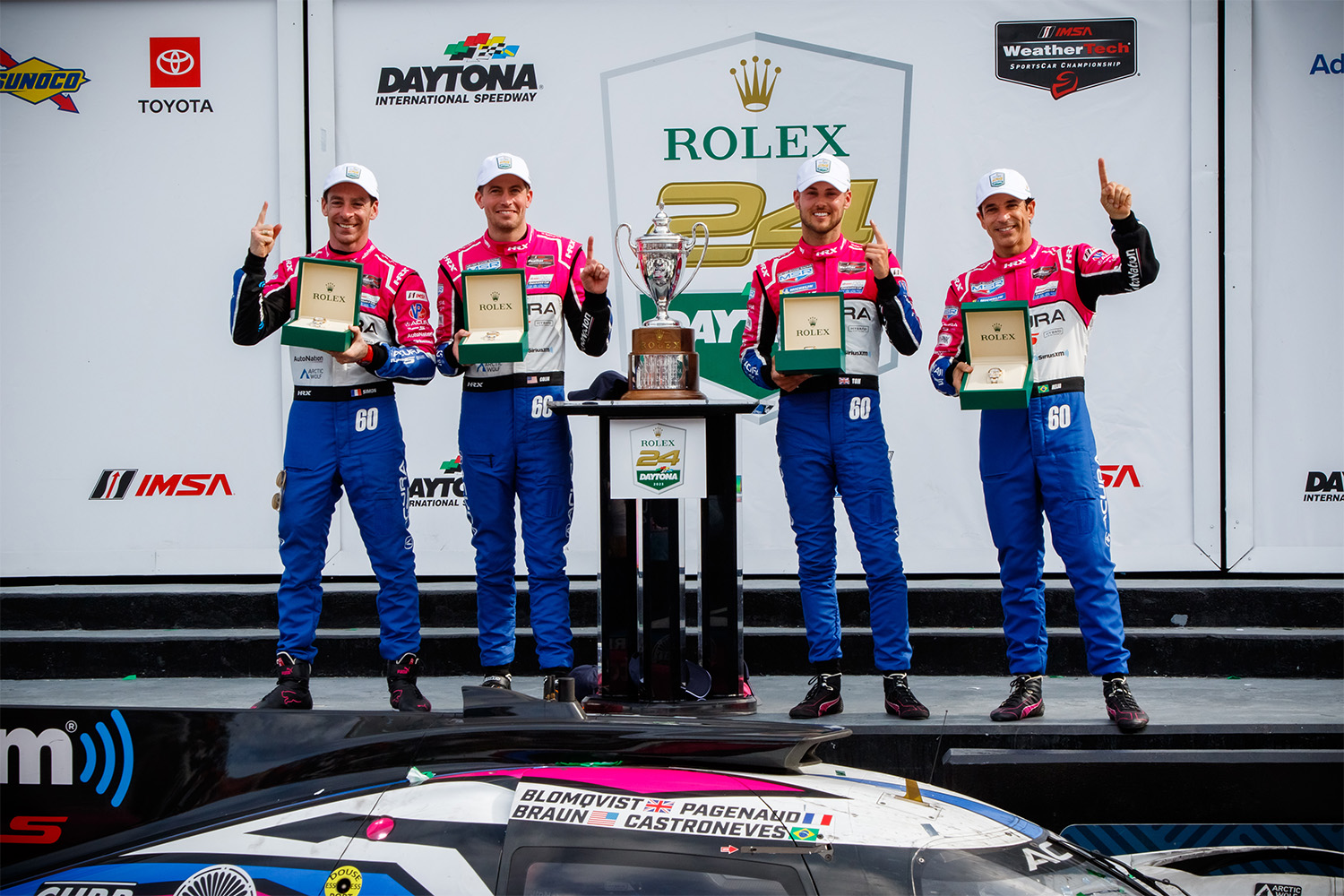
The Race Itself
Once the green flag is waved and the race is underway, the track’s 3.56-mile course must be lapped a staggering 800 times, with over half of these laps being completed after dark. (Fear not — the track is lit.) Comprising multiple classes, the competing cars must account for traffic, as some are, by design, faster than those of other types. Fielding a car, training drivers, maintaining a team, purchasing equipment — all this is a wildly expensive proposition, and one in which it pays to be well capitalized.
All day, all night, and half the next day, the competing Porsches, BMWs, Accuras, Lambos, and more zip around the track, changing drivers every three hours or so, but “pitting” much more often — perhaps as often as every few laps. Tires wear down, fuel is quickly eaten up, and parts fail. When this happens, the vehicle enters the pit lane, where it must slow way the hell down from top speeds of roughly 200 mph and pull into its respective pit. The car’s team then hops out of the pit, does what it needs to do, and the car is on its way — but not at top speed. There’s a limiter that must be engaged to keep the car at a safe clip, otherwise a serious accident could occur. Break this pit speed, and your team can be penalized.
After the race start, the devil is in the details: the milliseconds that comprise a professionally considered decision; the instincts of the driver; the strategy of the race team; the speed with which one can change drivers. One tiny misstep, and the game is up: Indeed, races often come down to intervals of just a couple seconds, and sometimes, much, much less. This is what differentiates an endurance race from so many other, more familiar sports. As Hurley Haywood said, the game is half-physical, half-mental.
During the last few hours, the race becomes increasingly…if not outright dangerous, then certainly, intense. For the majority of the race — and especially in daylight — the probability of a serious accident is fairly low, given the drivers’ experience and favorable conditions. But once the race has been going on for 20 hours, all bets are off. At this point, a driver is looking for any tiny advantage to win, and this is when concentration and efficiency need to be at all-time highs. A tiny misstep at this stage could spell disaster for one’s team — or, more literally, disaster in general.
The last few minutes are some edge-of-your-seat-level shit — though, to be fair, this year an Acura ARX-06 driven by Tom Blomqvist was in the pole position from the drop, nabbing a third consecutive win for Acura and delivering a win for Meyer Shank Racing with a 4-second interval. (His co-drivers, Simon Pagenaud, Colin Braun, and Helio Castroneves weren’t too shabby, either.) Once the race is over, the winning teams — there are multiple car, classes, remember — assemble in front of the winner’s stand, where officials, including the President & CEO of Rolex USA, present them with their trophies, the most important of which is (to my mind) a two-tone Daytona with a hell of an inscription on the caseback.
Regardless of one’s commitment to or interest in motorsport — (I still personally maintain that anything other than a 911 is probably ugly; don’t @ me) — the sheer tenacity of the drivers, the skill involved, the technology in the vehicles, the spectacle of it all, is something rare to witness even by over-the-top, go-big-or-go-home American standards. Just to have the opportunity to compete must surely be the experience of a lifetime…
Though at the end of the day, everybody — Rolex included — loves a winner.
This article was featured in the InsideHook newsletter. Sign up now.
